How to upgrade from 32 to 64 windows 7
Starting with Windows 7, operating systems have two bit versions: 32-bit and 64-bit. The first one is installed on most older PCs. It does not work with more than 3.5 GB of RAM. The treasured button that will double the computer's capacity does not exist. This cannot be done without reinstalling the system.
If you decide to change, check whether your PC is capable of working with a 64-bit system:
- Right-click on Computer and select Properties.
- Look for the line “System type” - opposite it should be written “x64 processor”.
- Make sure that the “Installed memory” is at least 4 GB.
- Download drivers for each device and save them to external storage.
Advice. Before reinstalling the system, be sure to copy important data to a safe place.
Insert the disk or flash drive with the operating system and start installation:
- select x64 bit depth in the installation menu;
- click “Install”;
- accept the terms of the license agreement and click “Next”;
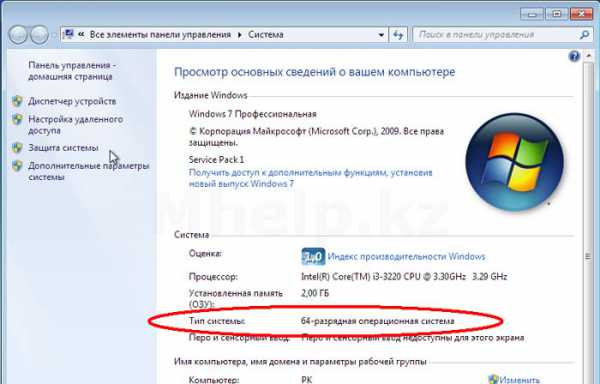 If you want to expand the capabilities of the operating system, you cannot do without reinstalling
If you want to expand the capabilities of the operating system, you cannot do without reinstalling - select the “Advanced” tab and indicate the area of the hard drive where windows was installed;
- in “Hard disk options (advanced)” select the task to format the disk;
- enter your product key;
- install the drivers (“Computer” - “Management” - “Device Manager”).
If you decide to update not only the category, but also the system version, then when moving from x32 Windows 7 to x64 Windows 10, you may lose the key. First, upgrade to 32-bit tens.
How to switch from a 32-bit to a 64-bit operating system: video
KakHack.ru
64-bit system: how to switch from the 32-bit version and back
Today, more and more often, users of modern personal computers are faced with the concept of 64-bit systems. In particular, starting from the Windows 7 operating system and higher, OSes support 64-bit architecture. Considering the details of operation and technical principles, we will try to find a solution to the problem when a 64-bit system is available for installation. How to switch to it from a 32-bit version of the operating system?
A little history
Before setting out to solve such a problem, it is necessary to highlight some historical points associated with the emergence of what we today call systems with 64-bit architecture.
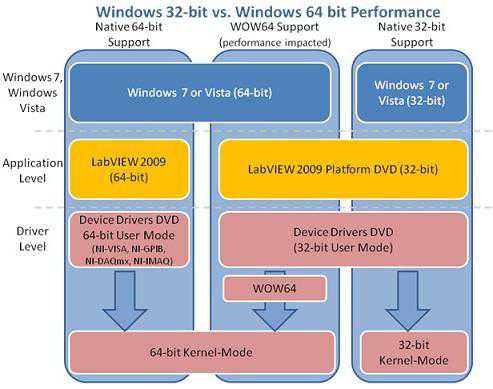
As you know, everything here depends on the capabilities of the processors. Initially, they used 8-bit, then 16-bit and, finally, 32-bit applications, the support of which became possible thanks to the release of the latest generation of processors in the form of the first-born of this series, the i486.
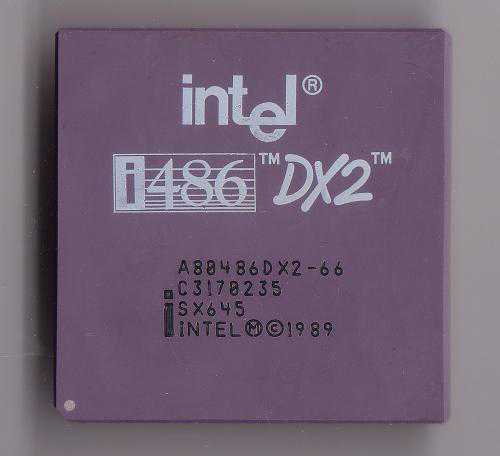
For a long time this was considered the most modern development, until Microsoft introduced a new “operating system” to the world. This was the 64-bit Windows system (although there was also a 32-bit version).
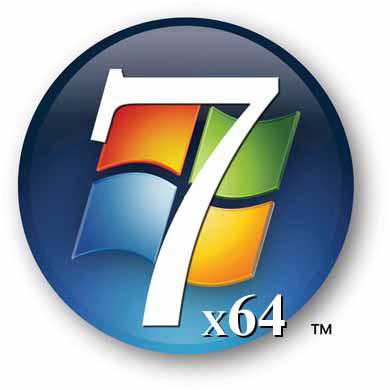
When testing it, it became clear that processors oriented to 32-bit architecture are simply physically unable to address memory requests over 4 GB (in reality, this figure is even less - 3.5 GB). This is considered the absolute limit of the 32-bit platform. But in the world of computer technology, many innovations appeared, such as MMX multimedia commands, which required more and more resources. So it turned out that, on the one hand, a 64-bit operating system came out, and on the other, new 2- and 4-core processors appeared that were capable of working with it.
By the way, the invention of the 64-bit architecture for the Windows operating system is not Microsoft's own development. The fact is that the first 64-bit system appeared back in 1985 and was called UNICOS. But at one time it remained unclaimed.
64-bit system: advantages
As for the main capabilities and advantages of 64-bit systems, it is obvious that with the appropriate hardware they can process data streams twice as fast. With their advent, it became possible to increase RAM to unimaginable limits. Today it is 192 GB.
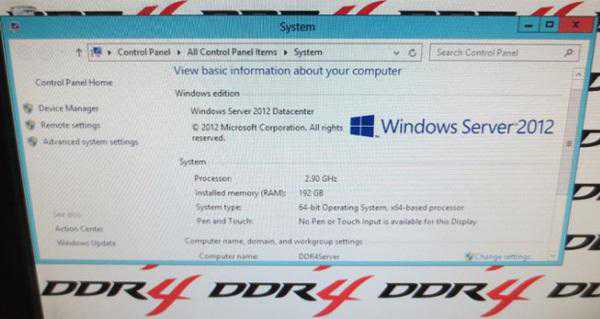
Of course, there are very big doubts that any of the users will be able to reach this ceiling. Wait! Computer games that use highly complex graphics are developing very rapidly, so raising the bar for RAM usage is not far off.
As for 32-bit systems, they do not allow installing more than 4 GB (as mentioned above). On older machines, you still need to think about the feasibility of such a transition (even if there is support for 64-bit architecture), since the new operating system will work much slower, if only because it will greatly load system resources.
Problems with legacy equipment
If you are wondering how to make the transition to a 64-bit system, it is immediately worth noting a point related to the equipment installed on your computer or laptop.
First of all, this concerns the processor itself. First you need to find out its modification (say, using the Everest utility), and then check on the manufacturer’s website to see if it supports 64-bit.
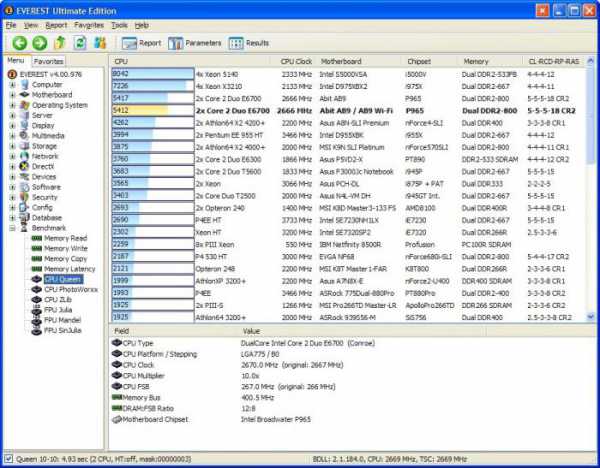
The same applies to other equipment such as hard drives, scanners, printers, etc. It may well be that after installing a 64-bit system they will not work at all. The fact is that there are no drivers for such equipment in Windows 7, 8 or 10’s own database, and the developers themselves simply do not release new drivers for outdated equipment.
64-bit system: how to switch?
Now let's look at the main issue of switching to a 64-bit version of the Windows operating system. Many users purchase or download a distribution that contains a 64-bit system. How can I switch to it without reinstalling? A question that can be answered unequivocally: not at all. Let us explain why.
This is connected not so much with file systems as with the system architecture itself. It simply does not provide for upgrading from a 32-bit version to a 64-bit version, although the file systems may be the same (for example, NTFS). FAT32 is not supported for system disks and partitions.
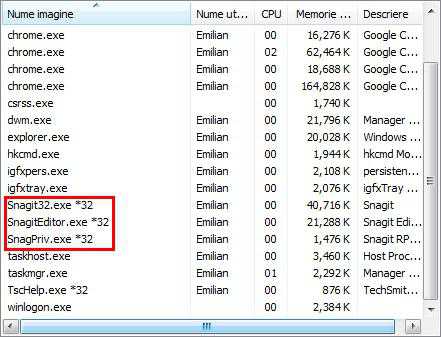
But on 64-bit systems you can run 32-bit applications and programs without problems (but not vice versa).
As for installation, you need to use the original installation disk and, as the main action, format the hard drive and logical partitions according to the proposed scheme. It goes without saying that valuable information must first be saved on removable media, and previously installed programs and applications will have to be reinstalled. As mentioned above, there is nothing wrong with the fact that they are designed for 32-bit systems.
Reverse actions
The installation is complete and we have a 64-bit system on our computer. How to switch to a 32-bit operating system if something doesn’t suit you? Again, no way. A complete reinstall will be required. Please note that in both cases this applies not only to the operating system itself, but also to absolutely all drivers, since they are also designed for use in systems with a certain bit depth (x86 or x64).
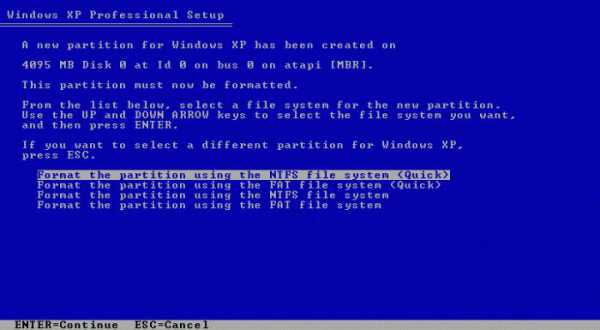
In this case, you can leave the NTFS file system or format it in FAT32.
Bottom line
That, in fact, is all on the topic “64-bit system: how to switch from 32-bit versions.” In principle, there is nothing complicated about this. The only thing that every user must understand: in this case, mandatory formatting and a complete reinstallation of the operating system is necessary. It simply won’t be possible to do this using conventional update means or any other way.
In addition, it is important to pre-test hardware equipment for compatibility with the new version of the operating system, as well as the question of the feasibility of installing 64-bit Windows on low-power machines. Because you can simply achieve the opposite effect, when performance is weakened by using the resources of the operating system itself.
fb.ru
How to make the transition to 64-bit windows.
Should I or shouldn't I switch to 64-bit windows?
By and large, we don’t care what nameplate is stuck on the processor.
What reasons should force us to switch to a 64-bit version of the operating system?
A little history:
Previously, all processors were 8-bit. Then there was a transition to 16 bits, which some gaming computers and consoles could not transfer.
The last revolution with the transition to 32 bits happened a long time ago, when Intel released the i486 processor.
You will also be interested to know that the 64-bit operating system is also not an invention of our century. The first of these systems was developed back in 1985. It was UNICOS.
And so... what are the advantages of 64-bit windows.
The needs of modern programs are growing; they are given more and more new commands (for example, MMX multimedia commands) and more and more memory.
With it, with memory, the limit has been reached on the 32-bit platform. The processor simply cannot address, even theoretically, more than 4 GB of memory.
And practically for the Windows operating system this figure is less than 3.5 GB. For computers with more than 4 GB of memory, there is no alternative... only switching to a 64-bit version of the operating system.
I wonder what I have on my computer?
Just open File Explorer and look for the My Computer shortcut. Right-click on it and select “System Information”.
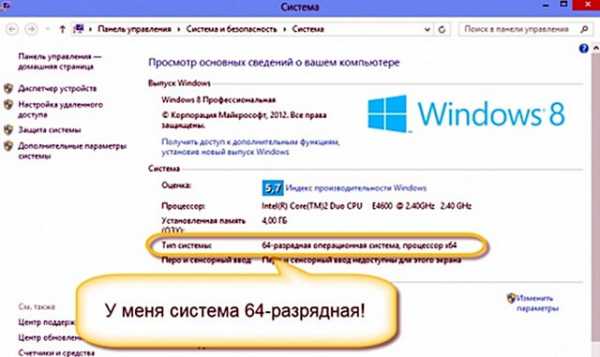
the inscription reads “64-bit”, then that’s it - your computer has already made the transition to a modern platform.
And if not…
First, let's find out if your processor is ready for this. To do this, in the same “System Information” window, select “Device Manager” and find the processor. By the name of the model we find it on Google.
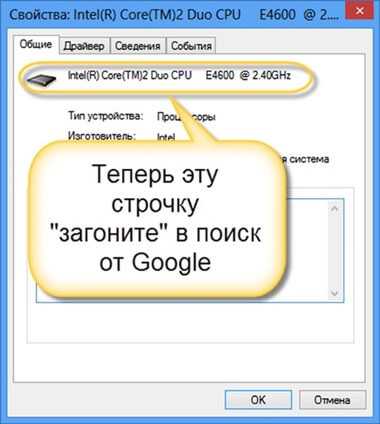
Open the Control Panel and type “Counters and Productivity Tools” in the search box. There will be one element left. In its window, click the button with the printer...
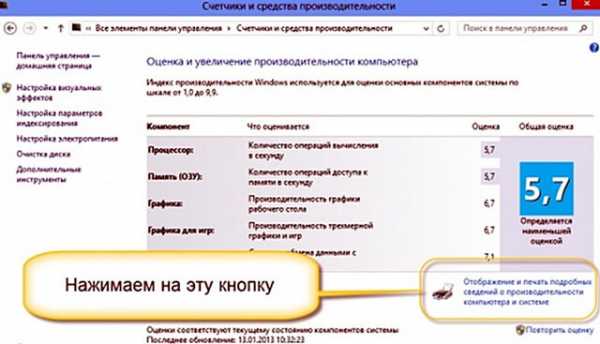
If the received report says that 64-bit support is present, then feel free to continue.
The transition to a 64-bit version of the operating system itself is quite simple. You simply click "Update" in the windows installer. However, your user files will not be affected.
However...problems
That's right... moving from one platform to another can be fatal for some of your old devices on your computer: old modems, unsupported video cards, printers.
You can use a tool from Microsoft called “Windows 7 Upgrade Advisor.”
This application will give a clear answer regarding the presence of drivers for all your devices.
Also, those programs whose developers have not made new versions capable of running on 64-bit systems may stop working.
Although Microsoft claims that almost all 32-bit programs do not lose functionality even in the 64-bit edition.
This seems true!
For example, I did not encounter any incompatible programs when changing the bit depth.
So...stay on the 32-bit operating system and be content with 3.5 GB of memory or upgrade to a 64-bit system???
At the same time, there is a possibility that you will have to stop using some old devices and programs.
Difficulties may arise if the network printer is connected to a computer with 64-bit Windows 7.
In this case, a 32-bit PC connected to this network will not be able to select this printing device. The solution may be to install a 32-bit printer driver on a 64-bit operating system.
But this is not always possible and only works if it is possible to unpack the installation package and install the driver via an INF file.
Owners of NAS servers or routers with a USB port can solve the problem faster by connecting a printer or scanner to these devices.
But the performance gains for systems with a large amount of RAM are so obvious that there is no need to cry about some modem produced in the last century.
Most printers, cameras, and other peripherals today have 64-bit drivers that provide flawless performance on a high-performance operating system.
However, there is a main caveat to this event:
To install Windows 7, you can select the “Update” option, as advised above, this is to save user files, settings and programs.
However... only if you are running a 32-bit version of Windows Vista and want to upgrade to a 32-bit version of Windows 7. Likewise, if your computer is running a 64-bit version of Windows Vista, you can only upgrade to 64-bit. bit version of windows 7.
For more information, see Upgrade to Windows 7 FAQ on the Windows website.
If you want to upgrade from a 32-bit version of Windows to a 64-bit version of Windows 7 or vice versa, you should back up your files and choose a full Windows 7 installation.
Then you need to restore files and reinstall programs
To install Windows 7 64-bit on a computer running 32-bit Windows, you will need to boot the computer using the Windows 7 64-bit installation disc or files.
If the computer that boots with the Windows 7 64-bit installation disc or files does not support that version of Windows, you will receive a Windows Boot Manager error message.
Instead, you will need to use the Windows 7 32-bit installation disc or files.
Windows Easy Transfer does not move files from 64-bit Windows to 32-bit Windows.
If your computer is running a 64-bit version of Windows Vista, but you plan to install a 32-bit version of Windows 7, you can manually transfer the files to external media or use the Backup and Restore feature in Windows Vista to do this.
For more information, see Back up your files and Restore a backup from a previous version of Windows on the Windows website.
If you are using a 64-bit version of Windows XP, you will need to manually transfer the files to external media.
This is such a gimmick... but on the other hand, if you have a powerful processor, it’s a sin not to install 64-bit Windows.
I think there are arguments in favor of taking action to make the transition to 64-bit windows.
wp.aspekti.eu
How to switch from 64 to 32 bit system
Many people are concerned about the question of how to switch from 64 to 32 Windows 7 without reinstalling. Nowadays, the majority of personal computers in the world are equipped with a 64-bit system. Let's figure out what it is. According to Wikipedia, bit depth is the number of bits (bits) of an electronic (in particular, peripheral) device, bus, simultaneously processed by the device or transmitted by the bus. It turns out that the number of bits means the width of the temporary data storage. Therefore, a 64-bit system is more productive than a 32-bit, 16-bit, or 8-bit system.
Features of each bit.
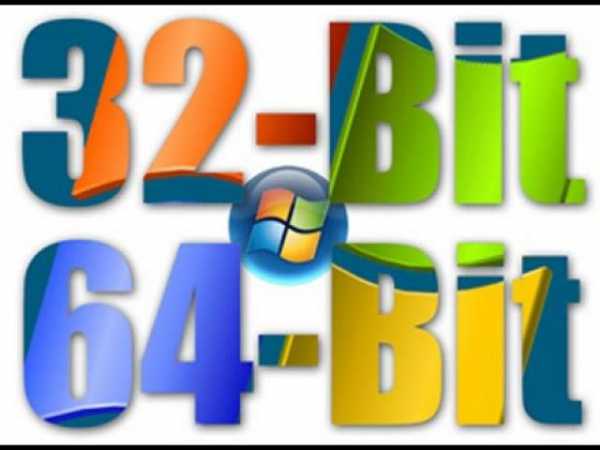
First, let's go over the main points of the 64-bit system: Processor speed. This is the most important advantage of a 64-bit system. A 32-bit processor covers only 2^32 addresses, while a 64-bit processor covers 2^64 addresses. Have you noticed how much system performance has improved? Previously, 32-bit bit capacity was quite enough; if you have a simple office box through which you access the Internet and periodically print documents, then a simple bit capacity would be enough. But for complex purposes, for example, using complex video editing programs or installing modern large games, you will have to install 64-bit architecture.
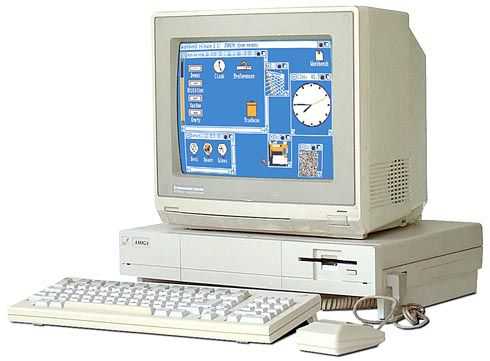
64-bit is already quite old. You may not believe it, but the very first computer with this architecture was released back in 1985! It turns out more than 30 years ago! But many people think that this system appeared only recently and is a work of the highest minds of modern computer science. And after the release of the first PC, for 17-18 years they were considered worthy of installation only on huge servers and large computers.

But it would be nice if we knew right away when architecture came to us. When we started using the devices, we did not realize that we were using such a capacity. Game consoles - Playstation 2 and Nintendo 64 had 64-bit engines! Many people have used them. Moreover, they appeared 6-7 years before the appearance on the market of a large number of personal computers with such a capacity.
Also, the reason for the system’s long-term adaptation to our lives is a huge number of problems with drivers. In 2001, Microsoft released 64-bit Windows XP, but it was still not accepted. The same thing happened with Windows Vista. And only on the “seven” there was a serious imbalance in the statistics - a huge number of users realized that a much larger bit depth of 64 bits was a wonderful thing that qualitatively improved the performance of the computer.
And if we consider this issue in terms of other operating systems, we can see that there the adoption of this bit capacity proceeded at the same slow pace - only on versions 2006-2010 did they become widespread.
The myth about the inability of a 64-bit system to work on laptops.
It can work quite well there, you just need a laptop with high performance, otherwise there simply won’t be any point.
But we repeat once again - a laptop or a computer - there is no difference for the operating system.
Much larger amount of RAM used. With 32 bits, you can use only 4 Gigabytes of RAM. If you install more capacity on a 32-bit system, you will not feel it at all - more will simply not be used. Unfortunately, not all users know this; PC owners often hear indignation about the installed over 4 GB of RAM - why we installed an additional 8 GB of RAM, but the operating speed did not increase at all. The answer lies in 1 parameter – system bit capacity. Usually 1 Gigabyte of RAM is taken by the system, the second Gigabyte will go to the video card and only 2 GB will be left for work. And this is really not enough for running 2-3 serious programs.
Let's move on to the disadvantages of the system. The system unit will require reinstallation of all components. To do this, you will have to look for drivers for older devices, which is a difficult task. It’s good if you have a modern device and already have drivers. But if you have to look for drivers again, then it is better to take care of their availability in advance - if you change the system and the necessary drivers are not there, you will have to fork out for a new system component, and you will simply have to throw out the old one.
If you have less than 4 GB of RAM installed, then there is no point in installing 64-bit - you simply don’t have enough RAM. Absolutely all programs will take up several percent more memory and therefore the old amount of RAM will not help you.
